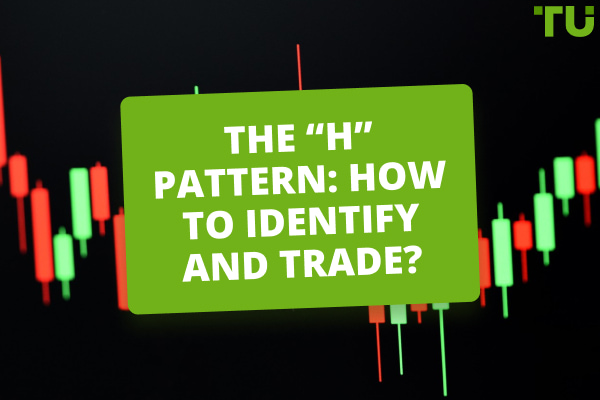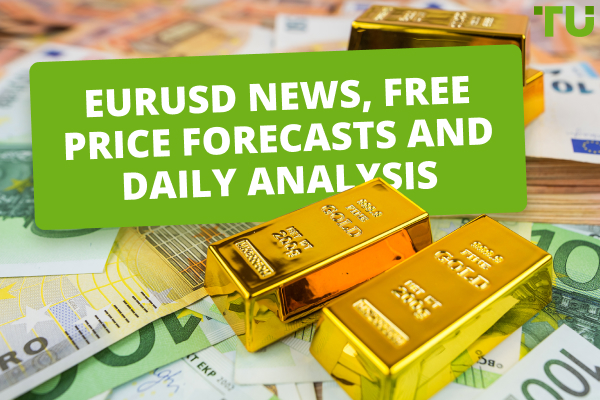Euro (EUR) In The Forex | Key Facts To Know
The Euro is the world’s second reserve currency behind the U.S. dollar and the second most popular currency in the Forex market. The EUR/USD pair accounts for over 25% of the market’s trading volume. The pair has high liquidity, narrow spread and moderate level of volatility.
The Euro is the second most popular currency in the world behind the U.S. dollar. In international payments, EUR continues to rank second despite the fact that its share has been declining. As of August 2023, the euro accounted for 23-24% of SWIFT payments, while the U.S. dollar’s share was 47-48%. The Eurozone currency is just as popular in trading, with the EUR/USD pair accounting for 25-28% of trading volume in the Forex market.
Statistical data on euro (EUR) and currency pairs
The euro is the official currency of the Eurozone countries introduced in 2002.
Interesting facts about the euro:
-
The euro is used only in the territory of the Eurozone. For example, Poland is a member of the European Union (EU), but not the Eurozone. Although the country pledged to transition to the euro, there is currently only one national currency in its territory – the Polish zloty.
-
The euro is managed by the European System of Central Banks, with the European Central Bank (ECB) at its helm. The ECB’s primary objectives are to maintain the stability of the euro. The ECB is responsible for the issuance of the euro and for monetary policy.
-
The euro is the second reserve currency behind the U.S. dollar. Some representatives of the global financial system voice opinions that the euro could potentially surpass USD by this indicator in the future, but that has not happened yet. The highest share of the euro in global foreign exchange reserves was recorded in 2009, at around 27.6%, while the share of the U.S. dollar was approximately 62%. Recently, there has been a decline in the shares of both currencies. In 2022, the share of the U.S. dollar in international reserves dropped to 47%, and the share of the euro fell to 20%.
-
The euro has a floating rate. Its value against other currencies is determined by the balance of market supply and demand. The ECB, on its part, can intervene or use monetary policy tools to move it in the desired direction by adjusting the money supply.
Analysts identify two primary long-term risks to the euro as an international payment currency:
-
1
The introduction of the BRICS currency: From January 2024, Argentina and several other countries may join the BRICS group. To reduce dependence on the U.S. dollar, there is consideration of introducing a single currency within the BRICS community. This could potentially impact the volume of euro transactions.
-
2
Legislative regulation of cryptocurrency status: The recognition of cryptocurrencies at the legislative level is another factor to consider. Not only will cryptocurrencies capture a portion of the monetary circulation, but central bank digital currencies (CBDCs) may also be created as an alternative form of currency.
Volatility level
Volatility is a statistical indicator that shows the degree of price variability. The wider the range the price travels over a specific period of time, the higher the amplitude and frequency, the higher the volatility.
24-week volatility of currency pairs
-in-the forex-key-facts-to know-image7.jpg)
The most popular currency pair, EUR/USD, falls into the category of instruments with increased volatility. It is less volatile than the exotic pairs, but its volatility is higher compared to other cross-currency pairs. Since high volatility implies unpredictability and forecasting complexity, novice traders are advised to consider less volatile, for example, EUR/GBP.
Correlation level
Correlation is an indicator that shows the degree of relationship between exchange rates (prices) of currency pairs:
-
Positive correlation: The prices of currency pairs move approximately in the same direction, experiencing similar drawdowns, corrections, and extremes. It is measured on a scale from 0 to 1, where 1 represents a strong correlation, and 0 represents no correlation.
-
Negative correlation: The price of currency pairs move approximately the same but in opposite directions. It is measured on a scale from 0 to -1, where -1 represents a strong negative correlation, and 0 represents no correlation.
There is no full or perfect correlation, but strategies can be built around the temporary divergence between price charts. For example, there is a positive correlation of 0.96 between the EUR/USD and EUR/JPY pairs. If the EUR/JPY price starts to reverse after an upward movement, one can assume that the EUR/USD pair will see a similar reversal after a few candles.
The tables below provide short-term and long-term correlations of major pairs with EUR. The information in the tables is for reference only, as correlation relationships can change over time. Source: Investing analytical portal.
Short-term correlation of currency pairs (time frame: M15, number of periods – 300)
| Currency pair | Positive correlation | Negative correlation |
|---|---|---|
EUR/JPY (0.96) |
USD/CHF (-0.97) |
|
EUR/NZD (0.74) |
AUD/CHF (-0.85) |
|
EUR/GBP (0.90) |
USD/DKK (-0.88) |
|
USD/CAD (0.54) |
NZD/JPY (-0.51) |
|
EUR/CAD (0.90) |
GBP/CHF (-0.94) |
|
CHF/JPY (0.94) |
USD/CHF (-0.88) |
|
USD/CAD (0.89) |
NZD/JPY (-0.86) |
What we see in the table and what we can use in trading strategies:
-
Negative correlation between EUR/USD and USD/CHF supports the belief that the Swiss franc is a defensive asset. Increase in the EUR/USD price means that USD depreciates against EUR. Decrease in USD/CHF means that USD also depreciates against CHF, where investor money moves.
-
Frequent negative correlations with cross rates or exotic pairs are visible. The example is DKK, which can be explained by Denmark’s proximity to the Eurozone (not to be confused with the EU).
-
EUR/CHF is a complex pair, as its chart does not match any other price chart. Correlation trading can be used for multiple time frame strategies. The example is searching for pairs and a moment in the market when correlation is highest on M15 and H1 time frames simultaneously.
Long-term correlation of currency pairs (time frame: D1, number of periods – 300)
| Currency pair | Positive correlation | Negative correlation |
|---|---|---|
EUR/USD |
GBP/USD (0.94) |
USD/CHF (-0.94) |
EUR/AUD |
GBP/AUD (0.95) |
AUD/CHF (-0.96) |
EUR/CAD |
GBP/CAD (0.94) |
USD/SGD (-0.84) |
EUR/CHF |
AUD/CAD (0.67) |
CAD/JPY (-0.69) |
EUR/GBP |
EUR/CHF (0.56) |
NZD/JPY (-0.67) |
EUR/JPY |
CHF/JPY (0.98) |
AUD/CHF (-0.88) |
EUR/NZD |
EUR/NZD (0.93) |
AUD/CHF (-0.94) |
What we see in the table and what we can use in trading strategies:
-
As is the case with short time frames, EUR/CHF remains a complex pair with almost no correlation. The situation is similar with EUR/GBP.
-
Some currency pairs have the same correlation on short- and long-term time frames. For example, EUR/JPY and CHF/JPY.
-
Currencies that are part of several pairs with negative correlation are DKK and SGD.
Unlike short-term time frames, EUR currency pairs do not have a high correlation with metals on long-term time frames. This might be because investors wait out a temporary surge in volatility in defensive assets, giving priority to more profitable instruments in long-term time frames.
Factors impacting the euro (EUR) price against other currencies
In any currency pair, one currency price against another is influenced by macroeconomic statistics reflecting the economic situation. The stronger and more stable the economy, and the fewer risk factors, the more investors are interested in the currency. Macroeconomic multiples result from the Central Bank policy, which keeps the price within the right range using monetary, legal, and customs instruments.
Factors influencing the EUR price against other currencies:
-
Economic indicators. Macroeconomic statistics: GDP, inflation, unemployment, interest rate levels, industrial production index, consumer price index, etc.;
-
Monetary policy. ECB decisions on interest rates, money supply, currency interventions, emissions, management of foreign exchange reserves, etc.;
-
News Releases. Forecasts, plans, declarations made by the heads of central banks and other financial institutions that can determine direction of future economic policy;
-
Political situation. Elections, referendums, strikes, etc.;
-
Global events. Trade wars, conflicts, and crises can cause fluctuations in foreign exchange markets, including EUR;
-
Supply and demand. Increase in the discount rate most often increases demand for the national currency. Market makers can also put pressure on the price by placing large orders to buy/sell EUR;
-
News and events. These can affect either economy and politics, or any other areas, provided that they can influence traders’ decisions;
-
Force majeure events, geopolitical risks. These include events that can directly or indirectly affect supply chains such as pandemic, political confrontations, sanctions, etc.
EUR in pair with major currencies remains within a relatively narrow range. Due to close trade relations and support for imports/exports, the central banks benefit from maintaining a certain price of the national currency. The situation is different for EUR paired with exotic currencies. For example, in the EUR/INR pair, EUR has high volatility with predominant INR devaluation.
Important factors for analysis and forecast:
-
The above factors of the countries/regions of a pair. For example, a comparison of GDP dynamics in the EU and the UK for the EUR/GBP pair;
-
Interconnection between economies. For example, the EUR/GBP pair is more sensitive to various internal factors than EUR/AUD;
-
Macroeconomic indicators of certain EU countries. For example, if migration issues escalate in France or the situation in the banking system of Italy deteriorates, EUR can be expected to weaken against other currencies;
-
Forecasts. For example, actual GDP growth of 2.5% against a forecast of 3% indicates a negative trend.
Where to get information for analysis. Such information is available on analytical resources, websites of central banks, news websites, economic calendars, forums, communities, and investment blogs.
The EUR/USD currency pair
-
Both currencies are freely convertible and are considered the world’s major currencies. The economies of the USA and Europe are among the top 5 largest in the world;
-
High liquidity. EUR and USD have many major market makers, including the Central Bank, which can at any time end a sudden increase in supply/demand with fundamental volatility;
Tight spreads. On ECN accounts, spreads start from 0 pips, on accounts with fixed spreads they start from 0.8-1.2 pips;
-in-the forex-key-facts-to know-image4.jpg)
-
Transparent monetary policy, market regulation, relative economic stability. Both countries have controlled inflation and a relatively low unemployment rate. Also, macro statistics and multiples are publicly available;
-
Confidence. Historically, the world’s main currency in international settlements is USD. And despite de-dollarization attempts in some countries, the importance of USD and, accordingly, its influence on EUR remains.
The average EUR/USD daily trading volume is several trillion US dollars. The all-time high over the last 5 years ranges 1.20-1.23, while the all-time low ranges 0.97-0.98.
-in-the forex-key-facts-to know-image5.jpg)
The best time to trade includes trading hours of the European and American sessions. When sessions open, it is better to wait 30-60 minutes, as increased volatility is often observed on this time frame. If you prefer intraday trading, try not to miss the period from 13:00 to 16:00 GMT.
How to trade the EUR/USD pair. Increase in price means that EUR is strengthening against USD, or USD, on the contrary, is weakening. Decrease in price means that people are selling EUR and buying USD, which is why EUR depreciates.
The EUR/USD price forecastThe best trading strategies. The best strategy is trading using fundamental analysis. For example, EUR/USD is sensitive to inflation reports, changes in discount rates, and unemployment rate on the short-term time frame. Swing trading and trading on reversal patterns for the supply/demand zone breakdown are suitable for intraday strategies.
The EUR/GBP currency pair
This currency pair with low volatility and no correlation with other pairs is relatively difficult to forecast. A lot has changed since Brexit 2016. Following the UK’s decision to exit from the EU, the price increased suddenly, and GBP hasn’t managed to return to the levels of 2015-2016 by now.
The main reason for the GBP weakening is considered to be the disruption in economic and trade relations. Although the UK and the EU remain trading partners, some market participants have relocated to Europe due to the break of financial and supply chains.
-in-the forex-key-facts-to know-image6.jpg)
Due to close economic relations, the price moves within a relatively narrow range. On the long-term chart, the visible resistance level ranges 0.92-0.93, while the support level ranges 0.82-0.83.
GBP/USD price nowMainly European traders are interested in this currency pair, therefore the largest trading volumes can be observed during the European session. The best trading time is 8.00 - 16.30 GMT.
The GBP/USD price forecastBest trading strategies are channel strategies, trendline trading, trading with resistance/support levels, and trading using fundamental analysis.
Best Forex brokers


Expert opinion
EUR is a good instrument in all regards. When there is a political crisis in the U.S. with an increase in inflation and unemployment rates, money is transferred into EUR. When there are problems due to geopolitics and high fuel prices in Europe, money is transferred from EUR to USD. All brokers work with the EUR/USD pair. An investment portfolio with equal shares of USD and EUR is considered a portfolio protected against temporary fluctuations. EUR in pair with exotic currencies is a dangerous instrument due to sensitivity to fundamental factors and low liquidity. But there are interesting strategies, for example, for the EUR/INR pair.
Summary
In the Forex market, EUR in pair with major currencies is a high liquidity instrument that is suitable for almost any strategy, including diversification of an investment portfolio. The main factors that influence the price are macro statistics of the EU and its certain countries. Novice traders are recommended to work with EUR in pair with CAD and AUD. The EUR/USD pair is recommended for moderately and highly experienced traders.
FAQs
Where can I find the actual EUR price?
It’s available on the websites of central banks, commercial banks, brokers, and analytical portals, such as Investing and TradingView.
When does the EUR price change?
The EUR price against other currencies is set everyday by central banks. A Forex broker receives the price from liquidity providers and broadcasts it to traders based on the current supply/demand level.
What is the USD price against EUR on the stock exchange?
The current EUR price against USD is 1.0927.
What factors influence the EUR price?
The EUR price is influenced by macroeconomic statistics: changes in discount rates, inflation and unemployment rates, GDP level, balance of payments, etc.
Glossary for novice traders
-
1
Broker
A broker is a legal entity or individual that performs as an intermediary when making trades in the financial markets. Private investors cannot trade without a broker, since only brokers can execute trades on the exchanges.
-
2
Trading
Trading involves the act of buying and selling financial assets like stocks, currencies, or commodities with the intention of profiting from market price fluctuations. Traders employ various strategies, analysis techniques, and risk management practices to make informed decisions and optimize their chances of success in the financial markets.
-
3
Volatility
Volatility refers to the degree of variation or fluctuation in the price or value of a financial asset, such as stocks, bonds, or cryptocurrencies, over a period of time. Higher volatility indicates that an asset's price is experiencing more significant and rapid price swings, while lower volatility suggests relatively stable and gradual price movements.
-
4
Index
Index in trading is the measure of the performance of a group of stocks, which can include the assets and securities in it.
-
5
Cryptocurrency
Cryptocurrency is a type of digital or virtual currency that relies on cryptography for security. Unlike traditional currencies issued by governments (fiat currencies), cryptocurrencies operate on decentralized networks, typically based on blockchain technology.
Team that worked on the article
Oleg Tkachenko is an economic analyst and risk manager having more than 14 years of experience in working with systemically important banks, investment companies, and analytical platforms. He has been a Traders Union analyst since 2018. His primary specialties are analysis and prediction of price tendencies in the Forex, stock, commodity, and cryptocurrency markets, as well as the development of trading strategies and individual risk management systems. He also analyzes nonstandard investing markets and studies trading psychology.
Dr. BJ Johnson is a PhD in English Language and an editor with over 15 years of experience. He earned his degree in English Language in the U.S and the UK. In 2020, Dr. Johnson joined the Traders Union team. Since then, he has created over 100 exclusive articles and edited over 300 articles of other authors.
Mirjan Hipolito is a journalist and news editor at Traders Union. She is an expert crypto writer with five years of experience in the financial markets. Her specialties are daily market news, price predictions, and Initial Coin Offerings (ICO).









